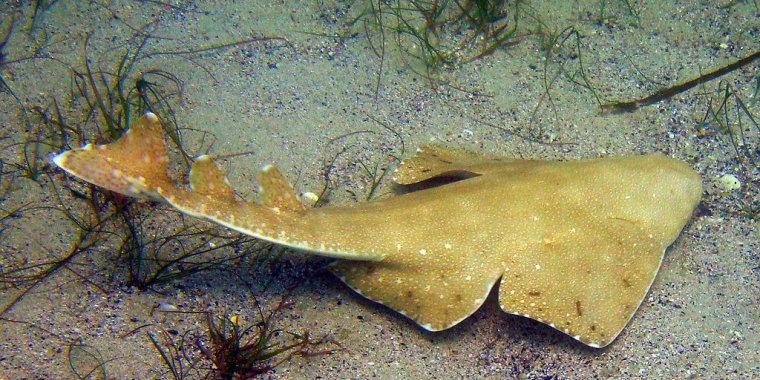| News / Science News |
New way to save endangered sharks – and our seafood
By using a genetic tool called DNA barcoding, Brazilian researchers could help prevent illegal fishing of threatened shark species and hence help prevent the collapse of some fisheries.

Squatina guggenheim, Squatina occulta and Pseudobatos horkelii are three protected shark species. ![]()
This is important because sharks are top predators that keep the marine ecosystem in check, helping to sustain the food web that supports millions of people worldwide who rely on seafood sustenance.
Although shark fishing is banned in Brazil, the clandestine market continues, driven partly by the high prices shark fins fetch: up to US$1,000 per kilogram on the international market.
Fishermen engaged in illegal fishing of sharks usually resort to finning: cutting off the caught sharks’ fins and throwing the sharks back into the water, where they die in agony.
Until now, it has been hard to tell whether the fins come from protected sharks, as they might look quite similar when severed.
In a study, researchers used DNA barcoding, a genetic tool able to analyses short segments of about 650 base pairs of the mitochondrial genome, for distinguishing different species of sharks.
Brazilian researchers extracted DNA from samples and compared it with sequences available in the Barcode of Life Online Database and GenBank, a database of information on DNA sequences and amino acids provided by the US National Center for Biotechnology Information.
By doing so, scientists were able to link many of the samples to three protected shark species: Squatina guggenheim, Squatina occulta and Pseudobatos horkelii.
All of them are listed as endangered or critically endangered on the International Union for Conservation of Nature (IUCN) Red List of Threatened Species, an inventory of the global conservation status of plant and animal species and subspecies.
“DNA barcoding revealed the continuous fishing and trafficking of these protected species, thus giving clear evidence that the current conservation models and methods of monitoring are not working,” the study concluded.
The authors propose that this method could be used by local authorities, so fishermen who catch and commercialize endangered species are sanctioned.
Sharks are sensitive to overfishing because they grow slowly, take a long time to mature, and have few offspring – a bit like mammals such as humans.
About 100 million sharks are caught and killed by humans annually, around 7 per cent of the total population, which is not naturally sustainable.
The decline in sharks has knock-on effects that might negatively affect human wellbeing too. It plays havoc with the ecosystem and the consequences may extend to local people who depend on marine biodiversity for income and as a source of food.
By removing a top predator, their prey can burgeon and compromise the food chain all the way down, affecting seafood consumed by people, the study says. (SciDev.Net)
YOU MAY ALSO LIKE


